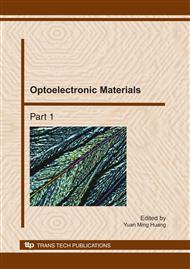p.1171
p.1175
p.1179
p.1183
p.1187
p.1192
p.1196
p.1200
p.1205
Phosphorus Content Dependent Sliding Wear Behaviors of Electroless Ni-P Deposits
Abstract:
In this work, the deposits of electroless Ni-P deposits prepared by different process were studied by means of EPMA, mirohardness tester, friction-wear instrument. The experimental results showed that the microhardness of the deposits was directly affected by the phosphorus content, which was depended on the processes of electroless. The friction-wear tests showed that the Ni-P deposits composing of less phosphorus content exhibited lower friction coefficient before and after being heat treated. The conclusion was drawn that the lower phosphorus content deposits could improve the wear resistance under the condition of both as-plated and after being heat treated Ni-P deposits. The wear behavior was typical of a pure adhesive wear mechanism for the high phosphorus content deposit at as-plated and after being heat treated at 200oC. However, for the high phosphorus content deposit after being heat treated at 400oC, the alternate friction mechanisms were emerged from adhesive wear to abrasive wear with the precipitating of hard Ni3P particles during Ni-P deposits suffering friction tests
Info:
Periodical:
Pages:
1187-1191
Citation:
Online since:
November 2010
Authors:
Keywords:
Price:
Сopyright:
© 2011 Trans Tech Publications Ltd. All Rights Reserved
Share:
Citation:


